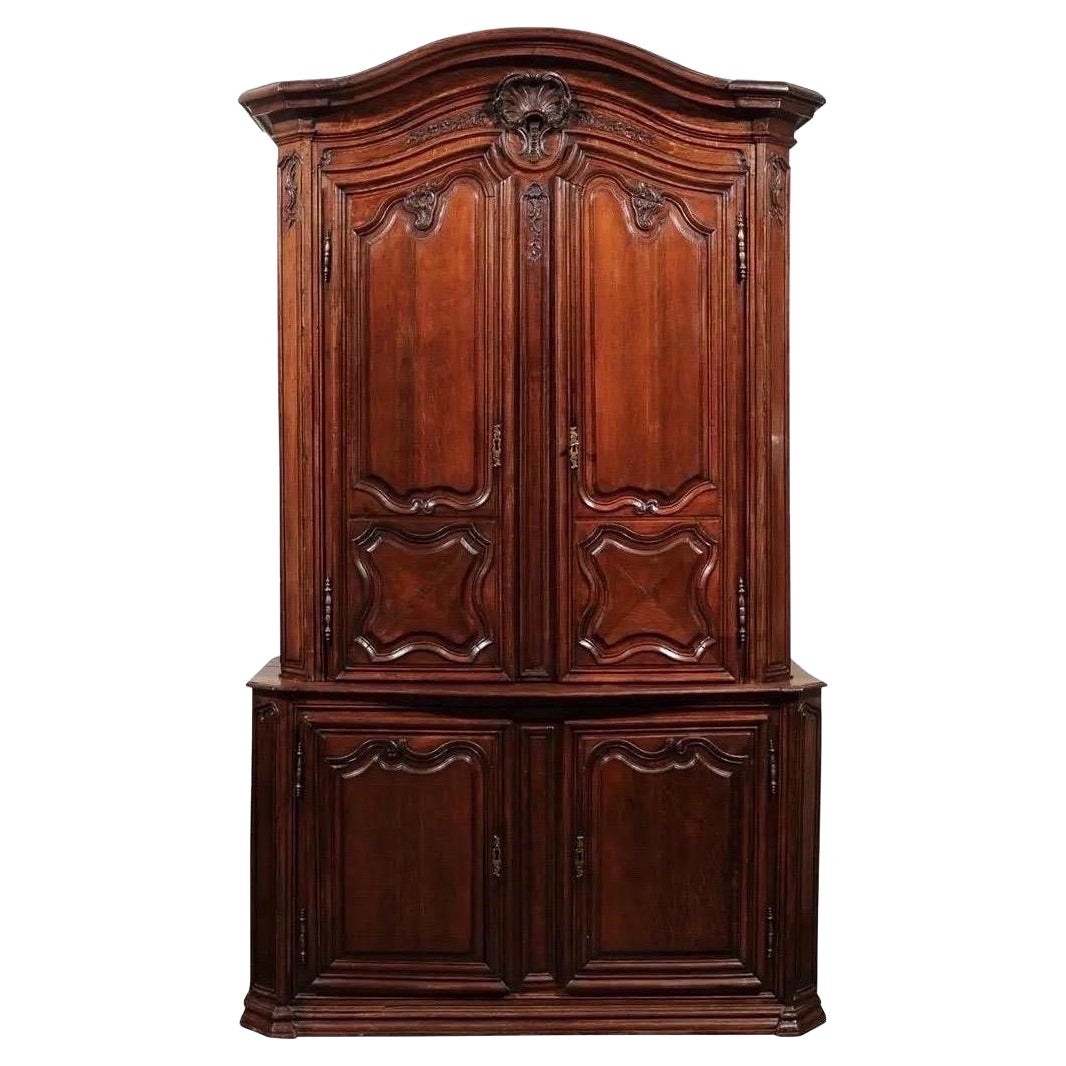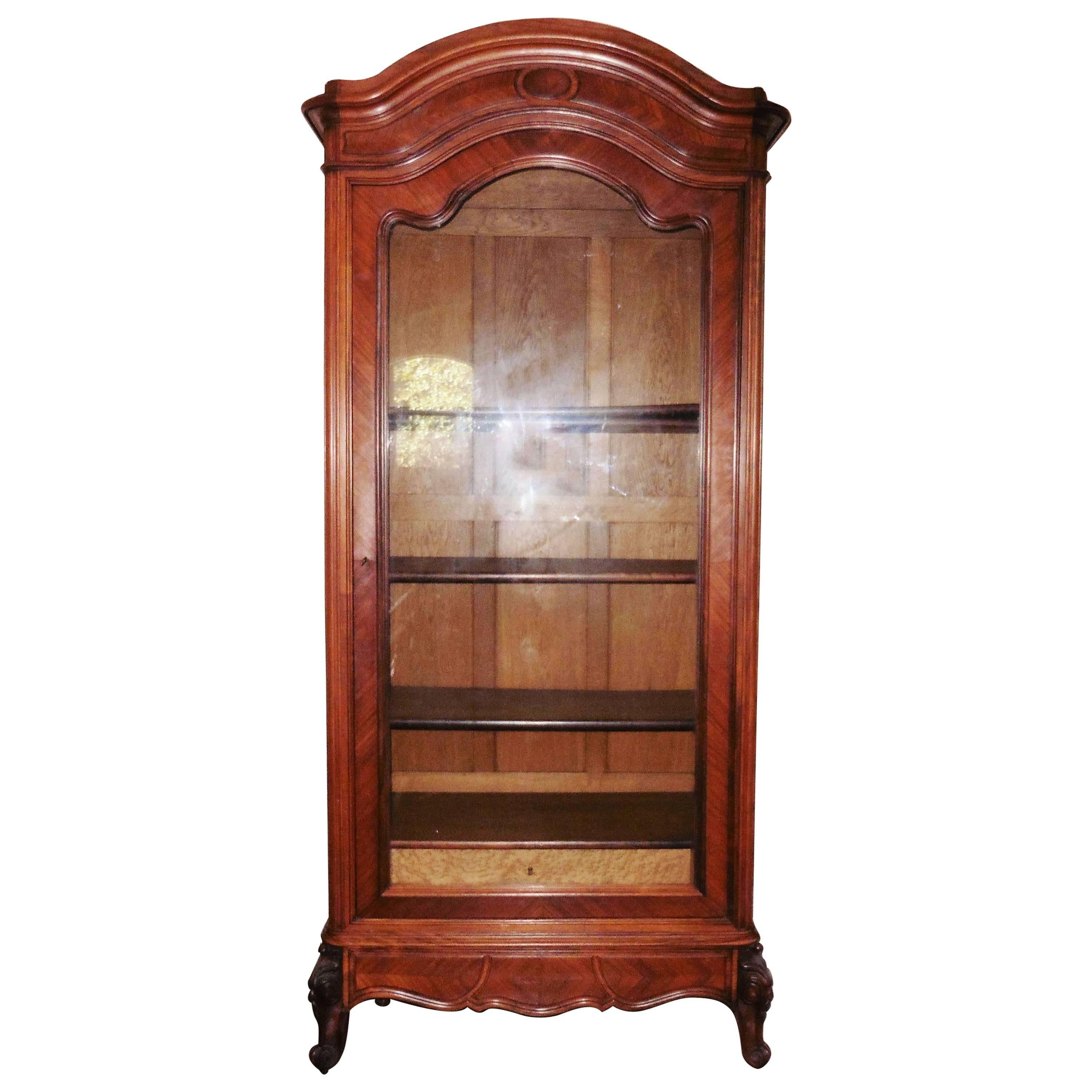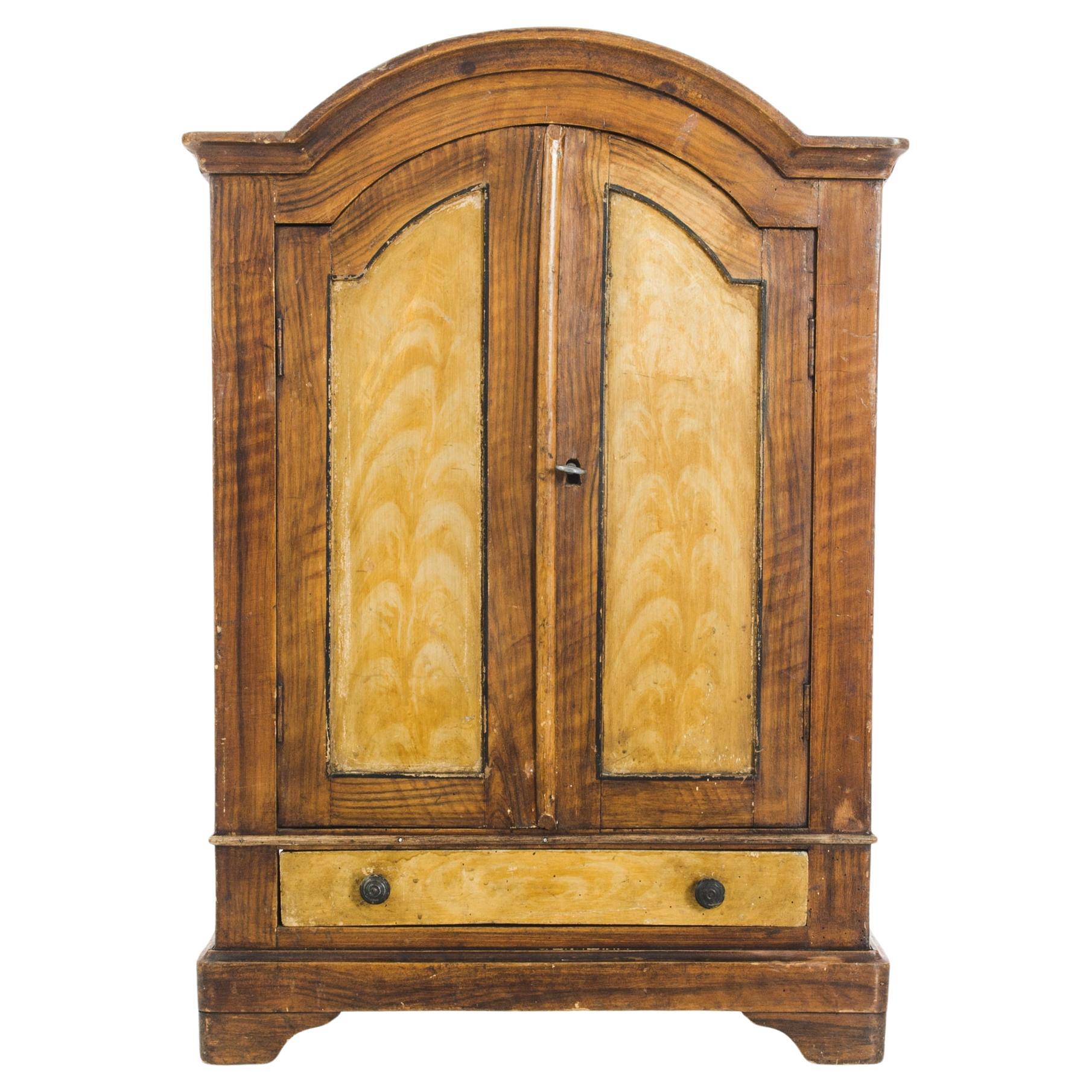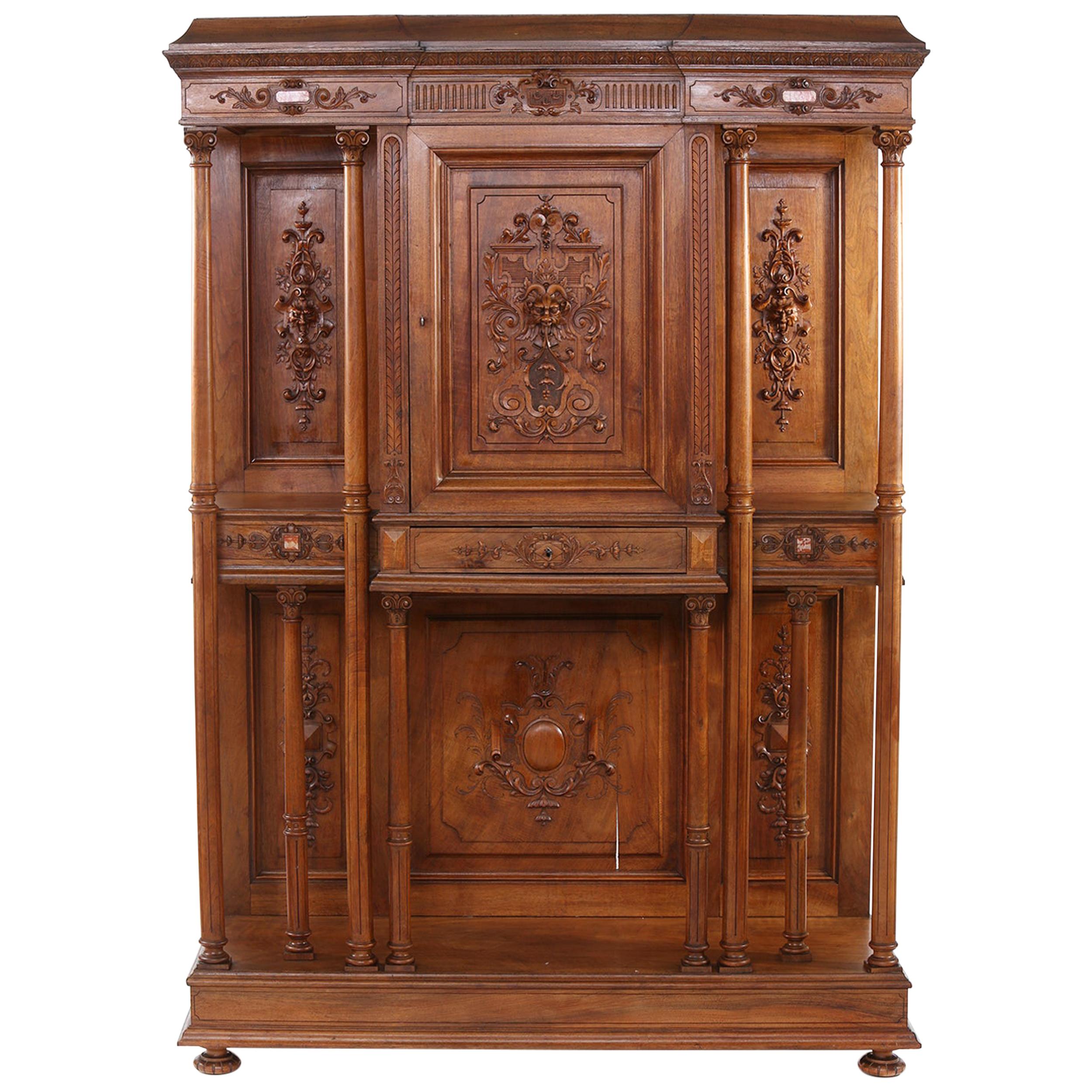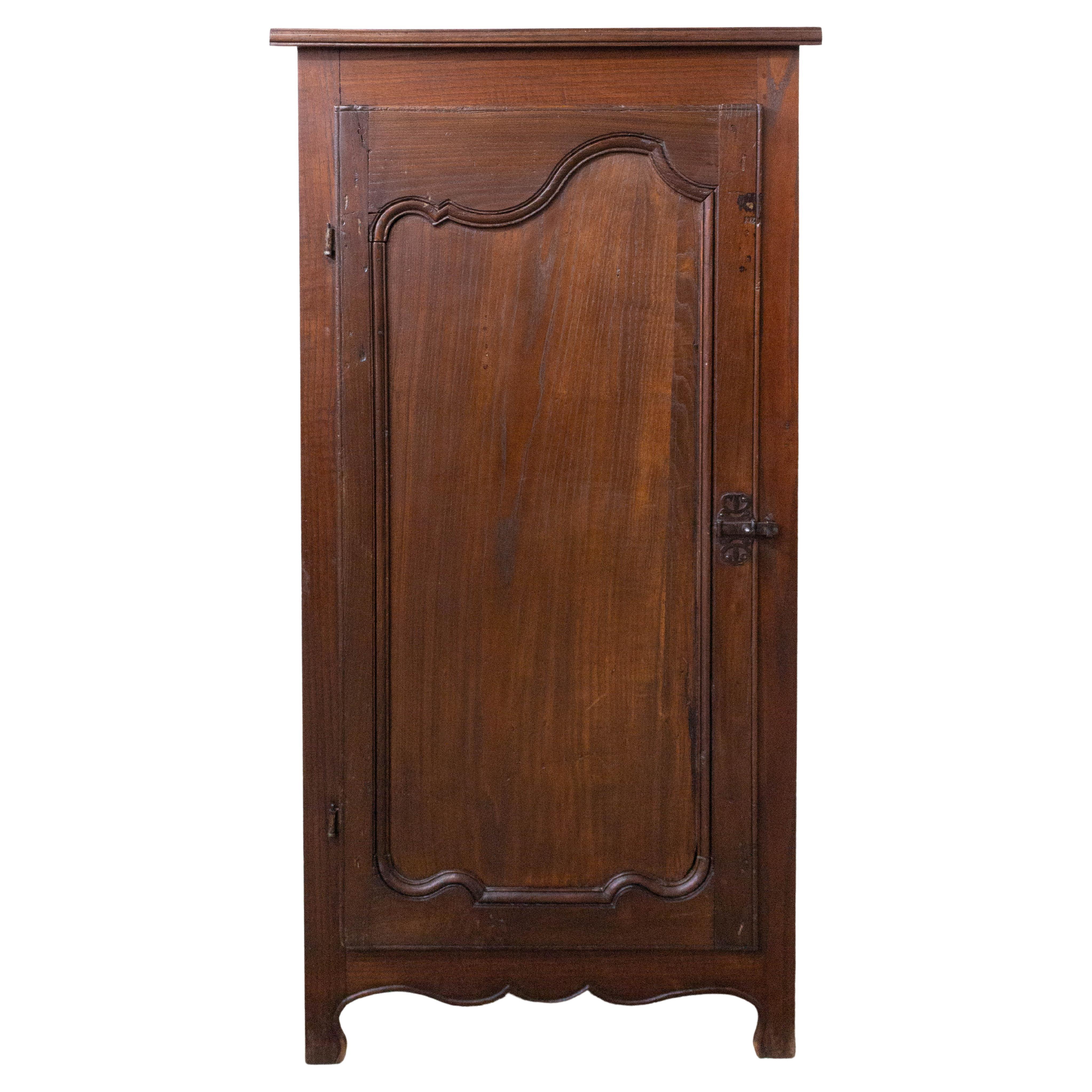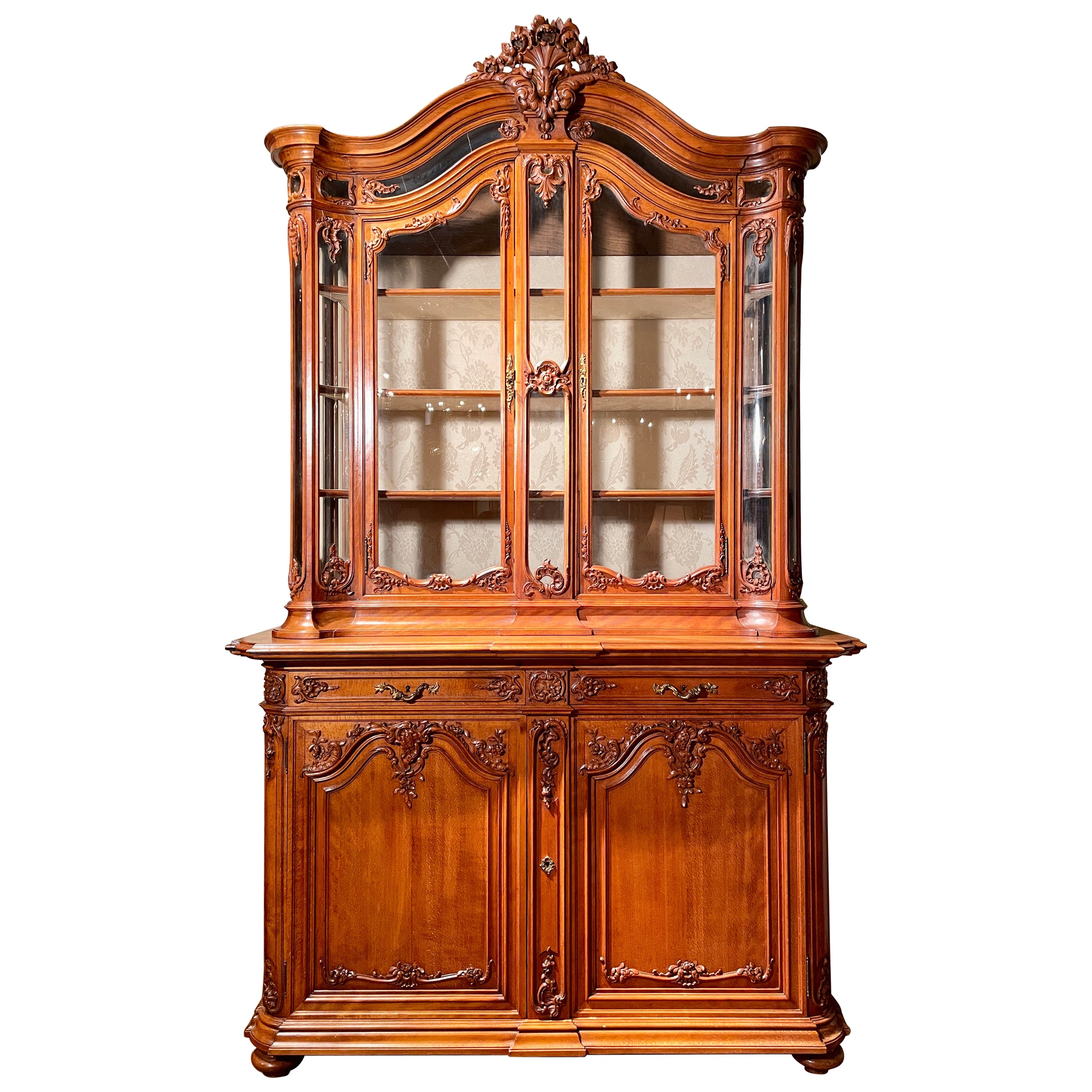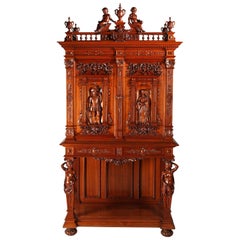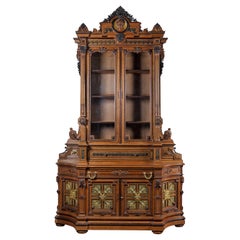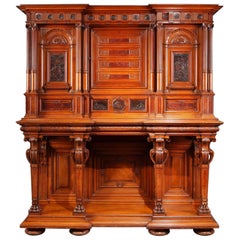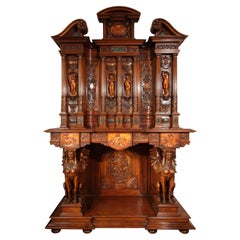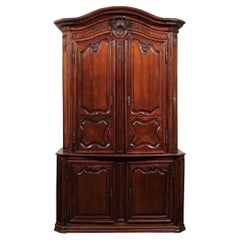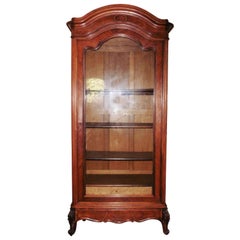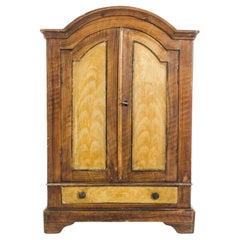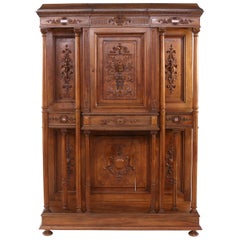Items Similar to Regence Style Wooden Display-Cabinet by C. Potheau, France, circa 1895
Want more images or videos?
Request additional images or videos from the seller
1 of 11
Regence Style Wooden Display-Cabinet by C. Potheau, France, circa 1895
$18,667.96
£13,929.23
€15,640
CA$26,031.54
A$28,526.85
CHF 14,897.31
MX$342,814.71
NOK 186,242.32
SEK 175,656.19
DKK 119,069.86
About the Item
Signed Constantin Potheau, ébéniste, Paris.
Measures: Height 275 cm (108,2 in., width 160 cm (63 in.);
Upper part depth 48 cm (18.8 in.) / inside 42 cm (16.5 in.)
Lower part depth 60 cm (23.6 in.).
A very fine Régence style two-part display-cabinet standing on a plinth, surmounted by an arched pediment. Executed in carved walnut, richly decorated with motifs, such as lambrequins, acanthuses, lattice and rosaces. Opening with four double opening system doors, fitted inside with shelves and drawers. This specific system makes easier and wider the opening; the doors can be folded along the sides.
Georges and Constantin Potheau took over the company led by Charmois and Lemarinier, and installed their workshops at the n° 21, rue du Faubourg-Saint-Antoine in Paris. “Potheau Brothers” were quite renowned for their Fine furnishings, simple but luxuruous. Remarked by the jury at the 1889 Paris Universal Exhibition, both of them were awarded a Silver medal for a superb carved fireplace. From 1894 onwards, Constantin ran alone the company.
- Creator:Potheau (Cabinetmaker)
- Dimensions:Height: 108.27 in (275 cm)Width: 63 in (160 cm)Depth: 23.63 in (60 cm)
- Style:Régence (In the Style Of)
- Materials and Techniques:
- Place of Origin:
- Period:
- Date of Manufacture:circa 1895
- Condition:Wear consistent with age and use.
- Seller Location:PARIS, FR
- Reference Number:Seller: 1754/31stDibs: LU3860321426312
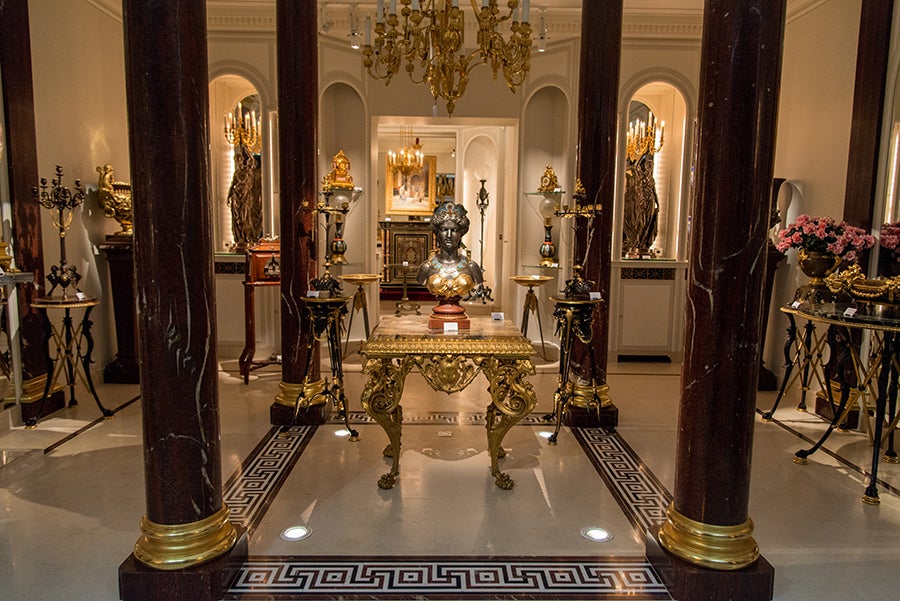
About the Seller
4.9
Vetted Professional Seller
Every seller passes strict standards for authenticity and reliability
Established in 1997
1stDibs seller since 2018
89 sales on 1stDibs
Typical response time: <1 hour
Associations
International Confederation of Art and Antique Dealers' Associations
- ShippingRetrieving quote...Shipping from: Saint Ouen, France
- Return Policy
Authenticity Guarantee
In the unlikely event there’s an issue with an item’s authenticity, contact us within 1 year for a full refund. DetailsMoney-Back Guarantee
If your item is not as described, is damaged in transit, or does not arrive, contact us within 7 days for a full refund. Details24-Hour Cancellation
You have a 24-hour grace period in which to reconsider your purchase, with no questions asked.Vetted Professional Sellers
Our world-class sellers must adhere to strict standards for service and quality, maintaining the integrity of our listings.Price-Match Guarantee
If you find that a seller listed the same item for a lower price elsewhere, we’ll match it.Trusted Global Delivery
Our best-in-class carrier network provides specialized shipping options worldwide, including custom delivery.More From This Seller
View AllRenaissance Style Wooden Cabinet Attributed to H.A. Fourdinois, France, 1893
Located in PARIS, FR
A wooden cupboard, elaborately carved throughout, dated "1893" on the crest and attributed to H.A. Fourdinois. The upper section with a pair of cherubs at the center of a balustrade ornamented with two-handled urns, two architectonic doors below, carved with lady and gentleman in niches surrounded by extensive carving with classical motifs. The lower section with two drawers above a standing female caryatid support at each front corner. The all reposing on four gadronned round feet.
The Fourdinois company was founded in 1835 by Alexandre-Georges Fourdinois (1799-1871). The Universal Exhibition held in London in 1851 was undoubtedly their first great artistic and public success. Winning the Great medal for a neo-Renaissance buffet...
Category
Antique 1890s French Renaissance Cabinets
Materials
Wood
$15,755 Sale Price
40% Off
Wooden & Enameled Display Sideboard Attributed to H.A Fourdinois, France, c1867
Located in PARIS, FR
Important two-tiered sideboard attributed to H.A. Fourdinois made in natural and carved wood : the lower part made up of four panels, two concave ones and two doors, richly ornated with a polychrome enameled floral decoration and gilt bronze plaques.
A large dual drawer is surmounted by the upper part of the sideboard, opening with two glazed doors, framed by detached columns. The entire unit is topped with a pediment onto which a female bust is carved in relief within a medallion on a gilt background.
With a matching set of twelve chairs.
The Forney library in Paris preserves order registers of the Fourdinois as well as sketches books and pictures representing pieces of furniture made by the Fourdinois workshops. In this documentation, some elements enable us to link this sideboard with Henri-Auguste Fourdinois’ productions, such as the large scrolls linking the upper part to the lower part of the sideboard, as well as the detached columns carved at their lower third. (picture n°1 attached)
Notebook containing ink-sketches coming from the Fourdinois workshop shows a project for a pelmet, beautified with a centering trophy composed of a torch and a quiver within in a foliage wreath, this motif obviously reused by the Fourdinois on the central decoration of the panels of our sideboard. (picture n°2 attached)
The firm of Fourdinois, considered during the Second Empire as the greatest furniture manufacturer in Paris, was founded in 1835 by Alexandre-Georges Fourdinois (1799-1871). It was developped in the context of the Expositions Universelles. At the time, the firm already produces furniture of the Neo-Renaissance style, such as a dresser that won the Great Medal at the London Universal Exhibition of 1851. The son, Henri-Auguste Fourdinois (1830-1907), joined the firm in 1860 and will become head of the firm in 1867. The high quality of his designs was remarked at the Universal Exhibition in 1862, when the jury awarded him two medals « for Excellence of Composition and Execution ». Henri-Auguste, now sole in charge, brought the firm to the summit of its achievements at the 1867 Universal Exhibition in Paris by winning the Grand Prize for his stand. Apart from the commissions he executed for the « Mobilier de la Couronne », he also produced high quality furniture for the Parisian bourgeoisie. The firm is at its zenith during the years 1862-1880. At this time, it is considered as an example to follow for other cabinet-makers, whether they are French, British or American.
Through the quality of execution and the extreme care taken in the decoration of furniture, H.-A. Fourdinois was particularly appreciated by Napoleon III and Eugenie...
Category
Antique 1860s French Renaissance Sideboards
Materials
Enamel, Bronze
Neo-Renaissance Cabinet by G.F. Quignon, Universal Exhibition of Paris 1889
By Frederic Gustave Quignon
Located in PARIS, FR
Presented at the Universal Exhibition of Paris in 1889
Important sculpted and engraved natural wood, patinated bronze and Griotte de Campan red marble inlaid Neo-Renaissance style cabinet.
The upper part is composed of a frieze of bronze medallions separated by triglyphs and supported by ribbed columns with Corinthian capitals. There are eight of these columns paired at the front and two simple columns at the rear. The facade presents an alternation of bronzes in niches and cartouches, of marble slates in cartouches sometimes flanked by palmettes, and of engraved motives of laurel and foliage scrolls. The upper part opens with three leaves and three mobile compartments. The belt carved with acanthus leaves opens with two drawers. This cabinet is supported by four richly sculpted tapered feet ending with claws. Four fluted pilasters are inscribed in the moulded back as counterparts. The whole ensemble stands on a moulded plinth and eight rounded feet.
Neo Renaissance Cabinet...
Category
Antique 1880s French Renaissance Cabinets
Materials
Marble, Bronze
$128,909 Sale Price
20% Off
Renaissance Style "Four Seasons" Cabinet by M. Lerolle, France, Circa 1890
By Lerolle
Located in PARIS, FR
Signed " Meubles D’Art, M. Lerolle, Fabricant, 61, Rue des Sts-Peres. Paris "
Remarkable carved wood cabinet, richly sculpted in the Neo-Renaissance style, and inlaid with vert de m...
Category
Antique 1890s French Renaissance Revival Cabinets
Materials
Marble
Neo-Renaissance Cabinet by P. Sormani and attr. to E. Lièvre, France, Circa 1870
By Edouard Lievre, Paul Sormani
Located in PARIS, FR
Signed twice on the lock P. SORMANI 10 rue Charlot Paris
Rare neo-Renaissance cabinet in carved wood and Portor marble, adorned with chiseled and gilded bronze.
The upper, part, surmounted by a frieze of posts and marble cabochons, consists of a central door decorated with a carved panel representing the birth of Venus, framed by two pairs of ringed and fluted columns with Corinthians capitals in gilded bronze revealing two doors with secret opening. Two drawers with lion’s head shaped handles and a central drawer decorated with tracery in gilded bronze complete the upper part of this cabinet.
In the lower part, two drawers on the belt with diamond...
Category
Antique 1870s French Renaissance Cabinets
Materials
Marble, Bronze
$64,932 Sale Price
38% Off
Exceptional L XVI Style Regulator-Wardrobe by Maison Forest, France, Circa 1890
By Forest A' Paris
Located in PARIS, FR
Signed Forest à Paris
A rare Louis XIV style wardrobe with a break-fronted ogee pediment. Opening with two side cupboards flanking a regulator clock, richly decorated with marquet...
Category
Antique 1890s French Louis XIV Wardrobes and Armoires
Materials
Bronze
You May Also Like
19th Century French Provincial Buffet Deux Corps Cabinet in Oak
Located in Atlanta, GA
19th-century French Provincial
Buffet a' Deux Corps
A handsome and sizable solid oak buffet a’ deux corps with Provincial charm from 19th-century France. This four-door antique case...
Category
Antique Late 19th Century French French Provincial Wardrobes and Armoires
Materials
Wood, Oak
French Display Cabinet, circa 1880
Located in Austin, TX
French rosewood cabinet vitrine with one drawer, glass door for display circa 1880, five shelves, antique key included. Minor wood loss.
Category
Antique 1880s French Napoleon III Cabinets
Materials
Rosewood
$2,760 Sale Price
20% Off
1880s French Wooden Small Cabinet
Located in High Point, NC
Transport your space to the refined elegance of the 1880s with this French wooden small cabinet. The two main doors swing open, revealing an open ...
Category
Antique Late 19th Century French Cabinets
Materials
Wood
$1,116 Sale Price
20% Off
19th Century French Renaissance Revival Display Cabinet
Located in Tarry Town, NY
Early 19th century French renaissance revival hand carved walnut with marble inserted reserve display wall cabinet. The cabine...
Category
Antique 1810s French Renaissance Revival Cabinets
Materials
Marble
French Corner Cabinet Louis XV Style, Oak, Late 19th Century
Located in Labrit, Landes
Corner cabinet in the Louis XV style.
Only the door is from circa 1890, the cabinet has been assembled later, circa 1960
Good condition and characterful with nice patina
Measure...
Category
Antique Late 19th Century French Cabinets
Materials
Oak
Antique French "Liégeois" Fruitwood Buffet à Deux Corps Cabinet, Circa 1890
Located in New Orleans, LA
Antique French "Liégeois" fruitwood Buffet à Deux Corps cabinet, Circa 1890.
Category
Antique 19th Century French Cabinets
Materials
Fruitwood
More Ways To Browse
Arched Pediment
Antique Folding Doors
Wooden Display Case
Wooden Display Cabinet
Carved Oak Buffet
Black Buffet
19th Century French Oak Buffet
Midcentury Sideboard Buffet
Antique Door Escutcheon
19th Century French Walnut Buffet
Antique Deux Corps
French Modern Buffet
Marble-Top Buffets
Antique Enfilade
Antique French Louis Xvi Buffet
Carved Wood Buffet
Cherry Dining Room Cabinet
Marble Top Louis Xvi Buffet
